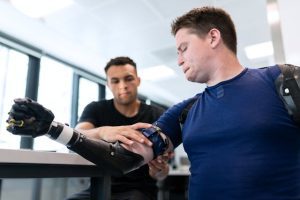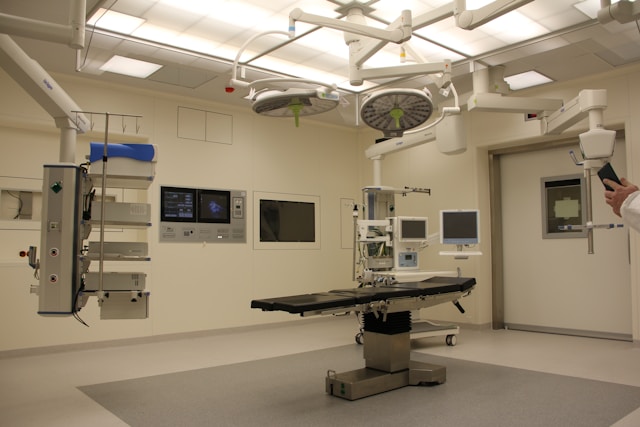The integration of the Internet of Things (IoT) in healthcare, commonly referred to as the Internet of Medical Things (IoMT), is revolutionizing the medical sector. Predicted to burgeon to a value of $176 billion by 2026, this burgeoning underscores a pivotal shift in how medical care is delivered, monitored, and enhanced. IoT medical devices, despite their vast benefits, also introduce significant security challenges, necessitating a balanced approach to their implementation and management. This comprehensive review explores the evolution of IoMT devices, their benefits, the security concerns they generate, and the measures necessary to safeguard sensitive health data effectively.
The Spectrum of IoT Medical Devices in Healthcare

Remote patient monitoring stands out as the paragon of IoT application in healthcare. Devices ranging from heart rate monitors to blood pressure cuffs now enable healthcare professionals to track patient health metrics real-time, regardless of the patient’s physical presence in a healthcare facility. This leap in technology not only enhances patient convenience by obviating the need for regular hospital visits but also enables proactive healthcare provision by alerting professionals to potential health issues before they become critical.
Advancing Patient Care through Innovation
IoT technology has made significant strides in glucose and heart-rate monitoring, drastically simplifying life for patients with diabetes and cardiac conditions. Continuous monitoring devices provide a seamless, accurate picture of a patient’s condition, offering insights that periodic tests cannot. These devices herald a new era in personalized healthcare, enabling adjustments to treatment plans in real-time, significantly improving patient outcomes.
Revolutionary Devices: Beyond Monitoring
IoMT’s potential extends beyond simple monitoring; it encompasses devices that offer treatment and even reside within patients. Connected inhalers, ingestible sensors, and smart contact lenses exemplify the innovative direction in which patient care is headed. These devices offer unprecedented convenience and precision in managing health conditions, from asthma to digestive system diagnostics, marking a significant leap forward in medical technology.
The Frontier of Surgical Precision: Robotic Surgery
IoT technology is transforming surgical procedures through the advent of robotic surgery. These Internet-connected robots usher in a new level of precision in surgical procedures, enabling minimally invasive operations and reducing recovery times. This not only enhances the surgeon’s capability to perform complex surgeries but also significantly improves patient outcomes.
Why Security is Paramount for IoT in Healthcare

The proliferation of IoT medical devices raises profound security concerns. The sensitive nature of the health data collected poses a tempting target for cyberattacks. Ensuring the security of these devices is paramount to protect patient privacy and comply with regulatory standards such as HIPAA. The challenge lies in developing robust security frameworks that secure devices from manufacture through to end-of-life, preventing unauthorized access to sensitive health information.
Beyond Monitoring: A Glimpse into Advanced IoMT Applications
Glucose and Heart-rate Monitoring
Innovative devices tailored for specific needs, such as glucose and heart-rate monitoring, offer a glimpse into the future of personalized medical care. Continuous and precise, these devices empower patients with diabetes and heart conditions to manage their health proactively, with real-time data and alerts.
The Frontier of Smart Devices
From hand hygiene reminders in hospital settings to mood and depression monitors, IoMT devices are expanding the boundaries of medical care.
- Hand Hygiene Monitors: Deployed in healthcare facilities, these devices play a crucial role in infection control, reminding both staff and visitors to maintain hand cleanliness, a simple yet powerful deterrent against the spread of infectious diseases.
- Mood and Depression Monitoring: Addressing the complex sphere of mental health, innovative mood-aware devices offer new vistas for monitoring psychological well-being, leveraging physiological indicators to gauge mental states.
Addressing the Challenge: The Role of Comprehensive Management Systems
Safeguarding IoMT devices requires a comprehensive strategy that encompasses device management, data encryption, and strict access controls. Solutions like the Ordr Systems Control Engine exemplify the approach needed to secure IoT devices in healthcare. By offering insights into device behavior, managing risks, and enforcing micro-segmentation policies, such systems play a crucial role in securing the IoMT landscape.
Pioneering Treatment and Diagnostic Solutions
IoMT’s potential extends into pioneering treatment methods and diagnostic tools, heralding breakthroughs in patient care management.
- Connected Inhalers and Ingestible Sensors: These devices offer revolutionary approaches to managing respiratory conditions and internal diagnostics, providing insights and alerts that enable more precise and individualized treatment plans.
- Robotic Surgery: Perhaps among the most futuristic applications of IoMT, robotic surgery introduces unparalleled precision in surgical procedures, minimizing invasiveness and enhancing patient recovery.
The Future of Healthcare: A Balanced Approach to IoMT
As IoT medical devices continue to integrate into the healthcare sector, their potential to improve patient outcomes, enhance convenience, and streamline healthcare delivery is undeniable. However, this comes with the caveat of heightened security risks. The future of healthcare will depend on our ability to harness the benefits of IoMT while simultaneously implementing robust security measures to protect sensitive health data. This balanced approach will ensure that the IoMT revolution not only advances healthcare technology but does so in a manner that safeguards patient trust and complies with regulatory requirements.
Conclusion
IoT medical devices represent a double-edged sword in healthcare: they offer unprecedented opportunities for enhancing patient care but also introduce significant security vulnerabilities. The task ahead is to navigate these challenges carefully, ensuring that the adoption of IoMT becomes a boon, not a bane, for the healthcare industry. Through diligent management, innovative security solutions, and a proactive stance on privacy, the integration of IoT into healthcare can achieve its full potential to transform patient care for the bette












